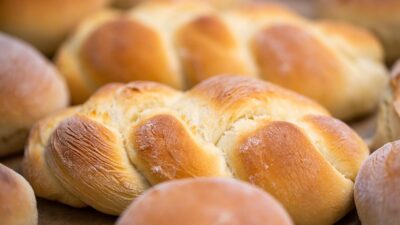Family recipes hold a special place in the heart of culinary traditions, serving not only as delicious meals but also as vessels of memories, love, and heritage. The nexus of art and science in these recipes showcases the intricate balance between creativity and technical skill, while also offering a profound connection to one’s roots. This article delves into the significance of family recipes, the artistry behind them, and the scientific principles that contribute to their enduring appeal.
The Heartfelt Connection
At their core, family recipes are more than just instructions for preparing food; they are artifacts of personal and cultural history. Passed down from generation to generation, these recipes offer a glimpse into the lives of those who came before us, carrying with them stories of celebration, comfort, and care. The act of gathering around a table to share a meal transcends culture and time, reinforcing family bonds and creating lasting memories.
Consider the Sunday sauce simmering on the stove in an Italian-American household or the meticulously crafted tamales filled with love during a holiday gathering in a Mexican family. Each dish evokes nostalgia, transporting individuals back to moments of togetherness. It is this emotional depth that gives family recipes their value, turning simple ingredients into heirlooms.
The Artistry of Culinary Creation
Creating a dish from a family recipe is akin to painting on a canvas—a fusion of flavors, textures, and techniques that come together to create something beautiful. The artistry lies not only in the final presentation but also in the thoughtful selection of ingredients and the delicate balance of flavors.
Many family recipes incorporate secret ingredients or preparation methods that lend them a unique flair. These nuances reveal the personal touches that elevate a dish from ordinary to extraordinary. For example, a grandmother might add a splash of aged balsamic vinegar to her famous roasted vegetables, imparting a depth of flavor that speaks to her experience and intuition.
Moreover, the art of cooking is inherently adaptive. While some family recipes are followed to the letter, others leave room for improvisation and experimentation. Chefs often find inspiration in the base of traditional recipes to create modern interpretations, honoring their roots while embracing innovation.
The Science Behind Flavor
While the art of cooking is celebrated for its creativity, the science behind it is equally important. Understanding how heat interacts with ingredients, the role of acidity, and the chemical transformations that occur during cooking can elevate the culinary experience.
Maillard Reaction
One of the most fascinating scientific principles is the Maillard reaction, which occurs when proteins and sugars in food are exposed to high heat. This reaction is responsible for the complex flavors and attractive browning on seared meats, roasted vegetables, and baked goods. Family recipes that involve these methods showcase the beauty of this chemical process, creating dishes that are not only comforting but also incredibly flavorful.
Emulsification
Another key scientific concept is emulsification, which is particularly relevant in dressings, sauces, and baked goods. The ability to combine oil and water-based ingredients into a stable mixture is essential for achieving the right consistency and texture. Developers of family recipes often learn through trial and error how to create the perfect emulsion, ensuring that their signature dressings and sauces become cherished staples.
Fermentation and Preservation
Many time-honored recipes also tap into the art and science of fermentation. This age-old preservation technique transforms simple ingredients into complex, flavorful foods—think pickles, kimchi, or sourdough bread. The fermentation process not only enhances taste but also adds nutritional benefits, making these dishes not just delicious but also healthy.
Preserving the Legacy
In a rapidly evolving culinary landscape, family recipes face the challenge of preserving their essence amidst modern influences. It is essential to document these treasured dishes, whether through handwritten recipe cards, digital formats, or even social media. By doing so, families can ensure that future generations have access to their culinary heritage.
Additionally, engaging younger family members in the cooking process can help instill a sense of pride and connection to their heritage. Involving them in the preparation of family recipes can make the experience more meaningful, fostering valuable skills and memories along the way.
Conclusion
Family recipes embody the rich tapestry of culinary tradition, weaving together the art of creative expression and the precision of scientific principles. They serve as a flavorful narrative of our past while nourishing both the body and the soul. As we continue to explore these cherished dishes, let us honor the stories they tell and the connections they forge—ensuring that a taste of tradition carries on for generations to come.



